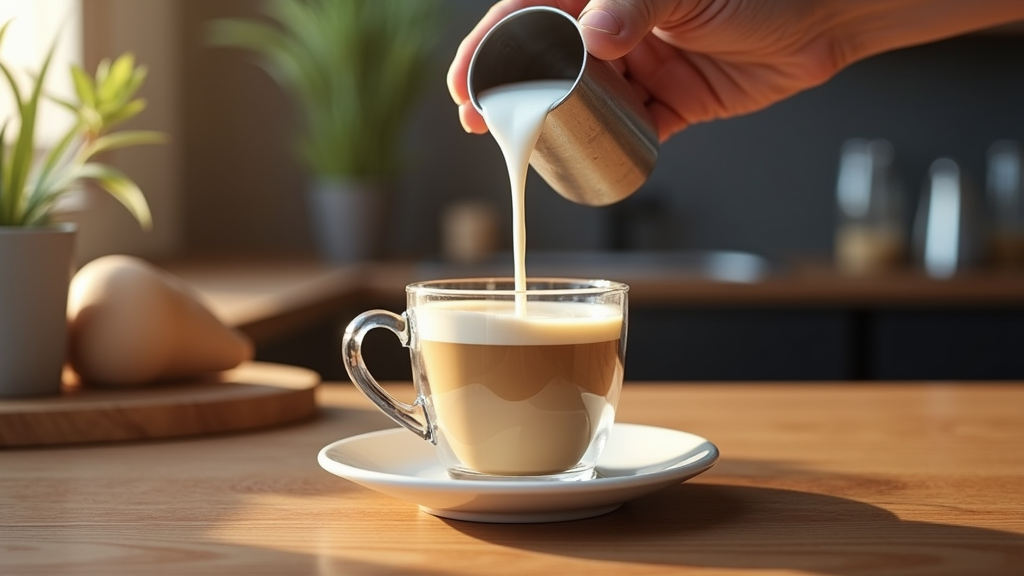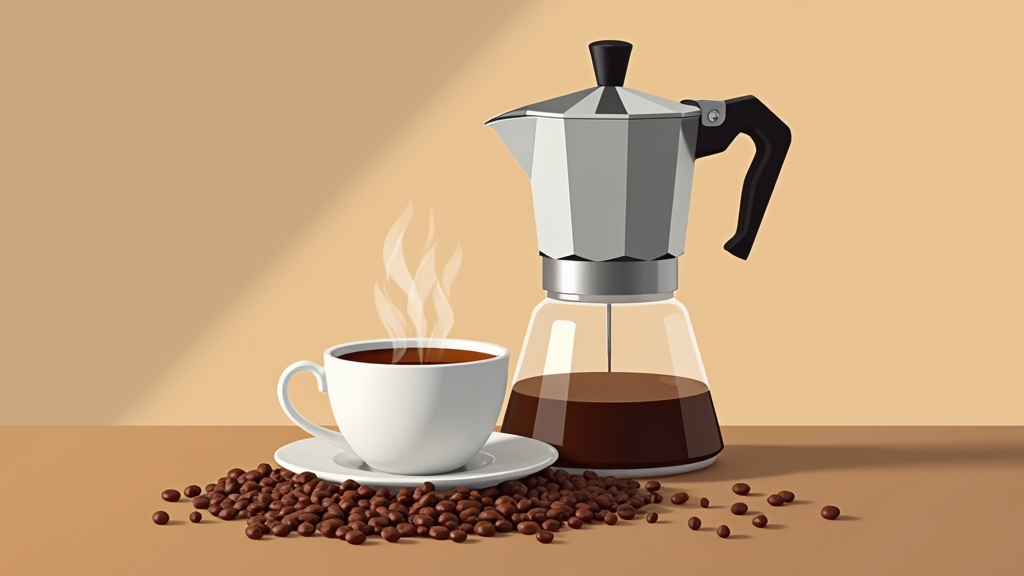Table of Contents
- Crafting Excellence: How to Make Good Coffee with Milk
- Understanding How to Make Great Coffee with Milk
- Detailed Guide: How to Make Coffee with Milk
- Gathering Materials for Good Coffee with Milk
- Initial Setup for Perfect Coffee and Milk Blend
- Important Considerations for Quality Coffee with Milk
- Step-by-Step Process to Combine Coffee and Milk
- Best Practices for Making Excellent Coffee with Milk
- Common Mistakes to Avoid in Coffee and Milk
- Expert Tips for Enhancing Coffee and Milk Flavor
- Optimization Methods for Better Coffee and Milk
- Troubleshooting Common Coffee with Milk Issues
Crafting Excellence: How to Make Good Coffee with Milk

Why Perfecting Coffee with Milk is Essential
Making the perfect coffee with milk is both an art and a science, transforming a simple beverage into a delightful experience. Over 60% of coffee drinkers enhance their daily cup with milk, a testament to its widespread appeal. With the global coffee market projected to reach $173.4 billion by 2028, understanding how to properly combine coffee and milk is more relevant than ever.
Adding milk enhances the flavor profile of coffee, softening any harshness and bringing out subtle nuances. It provides a smoother, creamier texture that many find more palatable than black coffee. Ultimately, mastering the art of coffee with milk offers a highly customizable beverage experience tailored to individual preferences.
A Brief History: Milk’s Role in Coffee’s Evolution
The practice of adding milk to coffee dates back centuries, evolving from a means of simple sustenance to a sophisticated culinary art. Historically, milk served to make coffee more accessible and palatable. Today, it’s a key ingredient in countless coffee beverages around the world.
Recent developments have further refined the coffee-with-milk experience. The rise of non-dairy milk alternatives has opened up new possibilities for those with dietary restrictions or preferences. Simultaneously, the increased availability of home espresso machines and milk frothers empowers coffee lovers to create café-quality drinks in their own kitchens.
Mastering Coffee and Milk: What You Will Learn
This guide will equip you with the core concepts necessary to consistently make excellent coffee with milk. You’ll gain an understanding of different coffee bean types and how they impact the final flavor. You’ll also learn to master milk frothing techniques, creating the perfect texture for your lattes and cappuccinos.
Beyond the theory, you’ll discover the practical applications of these skills. You’ll learn how to brew a perfect latte at home, craft café-quality cappuccinos, and experiment with flavor enhancements to personalize your coffee experience. By the end of this guide, you’ll have the knowledge and skills to consistently create delicious coffee with milk.
Understanding How to Make Great Coffee with Milk
Fundamental Concepts for Coffee and Milk Perfection
Before diving into the process, let’s define some key terms and principles that are fundamental to making excellent coffee with milk.
- Espresso:A concentrated coffee beverage brewed by forcing hot water through finely-ground coffee beans.
- Microfoam:Milk that has been steamed and frothed to create a velvety, smooth texture with tiny bubbles.
- Latte:A coffee drink made with espresso and steamed milk, topped with a thin layer of microfoam.
- Cappuccino:A coffee drink made with equal parts espresso, steamed milk, and milk foam.
The core principles revolve around quality, temperature, and technique. Using high-quality ingredients is essential for achieving the best flavor. Precisely controlling the temperature of both the milk and coffee ensures optimal taste and texture. Finally, mastering the correct techniques for brewing coffee and frothing milk will elevate your coffee-making skills.
Essential Components for Delicious Milk Coffee
To craft the perfect coffee with milk, you’ll need a few key ingredients and tools. Let’s break down the essential components.
- Required Elements:
- Key Features to Consider:
- Secondary Aspects:
- Important Variations:
- High-quality coffee beans or ground coffee.
- Milk (dairy or non-dairy alternative).
- Clean, preferably filtered water.
- Sweeteners (optional).
- Coffee Beans:Understanding the difference between Arabica and Robusta beans, as well as the impact of roast level (light, medium, dark) on flavor.
- Milk Type:Choosing the right milk – whole milk, 2% milk, skim milk, almond milk, oat milk, soy milk – significantly affects the drink’s texture and taste.
- Water Quality:Using filtered water minimizes unwanted flavors that can detract from the coffee’s taste.
- Sweeteners:Options like sugar, honey, syrups, and artificial sweeteners allow you to customize the sweetness.
- Flavorings:Adding vanilla extract, cinnamon, or cocoa powder can create unique and delightful flavor profiles.
- Equipment:Having the right equipment, such as a coffee maker, milk frother, and thermometer, makes the process easier and more consistent.
- Coffee-to-Milk Ratio:Adjusting the ratio to personal preference, such as 1:3 for lattes or 1:1:1 for cappuccinos, allows you to tailor the drink to your liking.
- Milk Temperature:Maintaining the optimal temperature range of 150°F to 160°F (65°C to 70°C) is crucial for achieving the desired texture and sweetness.
- Frothing Method:Different methods, including manual frothers, electric frothers, and steam wands, produce varying degrees of foam and texture.
Detailed Guide: How to Make Coffee with Milk

* **For the beginner:** Crafting the perfect coffee with milk is about quality ingredients and careful technique. Use freshly roasted beans, heat milk gently to avoid scalding, and experiment with bean varieties to find your ideal flavor.
* **For the flavor enthusiast:** Elevate your coffee with milk by experimenting with bean varieties and roast levels, and don’t be afraid to add a pinch of salt to reduce bitterness. Precise measurements and the right milk frothing tools will ensure consistent, delicious results.
* **For the problem solver:** Troubleshoot common issues like curdling by warming the milk first, and reduce bitterness by using a coarser grind. For optimal foam, ensure your milk is cold and use a quality frother.
Gathering Materials for Good Coffee with Milk
To start, ensure you have all the necessary ingredients and equipment readily available. This includes coffee beans or ground coffee (1-2 tablespoons per 6 ounces of water), your preferred milk type (amount varies depending on your desired drink), filtered water, and sweetener if desired. You’ll also need a coffee maker or espresso machine, a milk frother or saucepan, a thermometer (optional but recommended), and a coffee cup or mug.
- Coffee beans or ground coffee (1-2 tablespoons per 6 ounces of water).
- Milk of choice (amount varies depending on desired drink).
- Water (filtered is best).
- Sweetener (optional).
- Coffee maker or espresso machine.
- Milk frother or saucepan.
- Thermometer (optional, but recommended for milk).
- Coffee cup or mug.
Initial Setup for Perfect Coffee and Milk Blend
Before brewing, grind your coffee beans to the appropriate coarseness – medium for drip coffee and coarse for a French press. Make sure your coffee maker is clean and ready for use. If you plan to heat milk on the stovetop, prepare your saucepan. If using a milk frother, ensure it’s clean and accessible.
- Grind coffee beans to the appropriate coarseness (medium for drip, coarse for French press).
- Ensure coffee maker is clean and ready for use.
- Prepare milk frother or saucepan for heating milk.
Important Considerations for Quality Coffee with Milk
For optimal flavor, use freshly roasted coffee beans. Choose the right milk type based on your dietary needs and taste preferences – whole milk creates richer flavor and texture. Measure ingredients accurately to ensure consistent results every time you make coffee with milk.
- Use freshly roasted coffee beans for optimal flavor.
- Choose the right milk type based on your dietary needs and taste preferences.
- Measure ingredients accurately for consistent results.
Step-by-Step Process to Combine Coffee and Milk
First, measure 1-2 tablespoons of coffee per 6 ounces of water. Follow the manufacturer’s instructions for your specific coffee maker. Brew the coffee. Heat milk to 150°F to 160°F (65°C to 70°C) in a saucepan or microwave. Use a milk frother or handheld wand to create microfoam. Pour heated or frothed milk into a coffee cup, then slowly add brewed coffee. Add sweetener to taste and stir until dissolved.
Best Practices for Making Excellent Coffee with Milk
Heat milk slowly to avoid scalding. Use a thermometer to ensure milk reaches the optimal temperature. Pour milk slowly to create latte art, if desired.
- Heat milk slowly to avoid scalding.
- Use a thermometer to ensure milk reaches the optimal temperature.
- Pour milk slowly to create latte art (optional).
Common Mistakes to Avoid in Coffee and Milk
Avoid overheating the milk, which can scorch it and affect the taste. Using stale coffee beans results in a bland or bitter flavor. Adding cold milk to hot coffee can cause curdling.
- Overheating the milk, which can scorch it and affect the taste.
- Using stale coffee beans, which results in a bland or bitter flavor.
- Adding cold milk to hot coffee, which can cause curdling.
Expert Tips for Enhancing Coffee and Milk Flavor
Experiment with different coffee bean varieties and roast levels to find your perfect flavor profile. Try adding a pinch of salt to your coffee grounds to reduce bitterness. Use a milk frothing pitcher with a spout for better control when pouring latte art.
- Experiment with different coffee bean varieties and roast levels to find your perfect flavor profile.
- Try adding a pinch of salt to your coffee grounds to reduce bitterness.
- Use a milk frothing pitcher with a spout for better control when pouring latte art.
Optimization Methods for Better Coffee and Milk
Adjust the coffee-to-milk ratio to suit your personal taste preferences. Use a burr grinder instead of a blade grinder for more consistent coffee grounds. Pre-heat your coffee cup to keep your drink warmer for longer.
- Adjust the coffee-to-milk ratio to suit your personal taste preferences.
- Use a burr grinder instead of a blade grinder for more consistent coffee grounds.
- Pre-heat your coffee cup to keep your drink warmer for longer.
Troubleshooting Common Coffee with Milk Issues
If milk is curdling, warm the milk before adding it to the coffee. If coffee tastes bitter, use a coarser grind or reduce the brewing time. For lack of foam, ensure the milk is cold before frothing and use a high-quality milk frother.
- Milk curdling:Warm the milk before adding it to the coffee.
- Coffee tasting bitter:Use a coarser grind or reduce the brewing time.
- Lack of foam:Ensure the milk is cold before frothing and use a high-quality milk frother.

